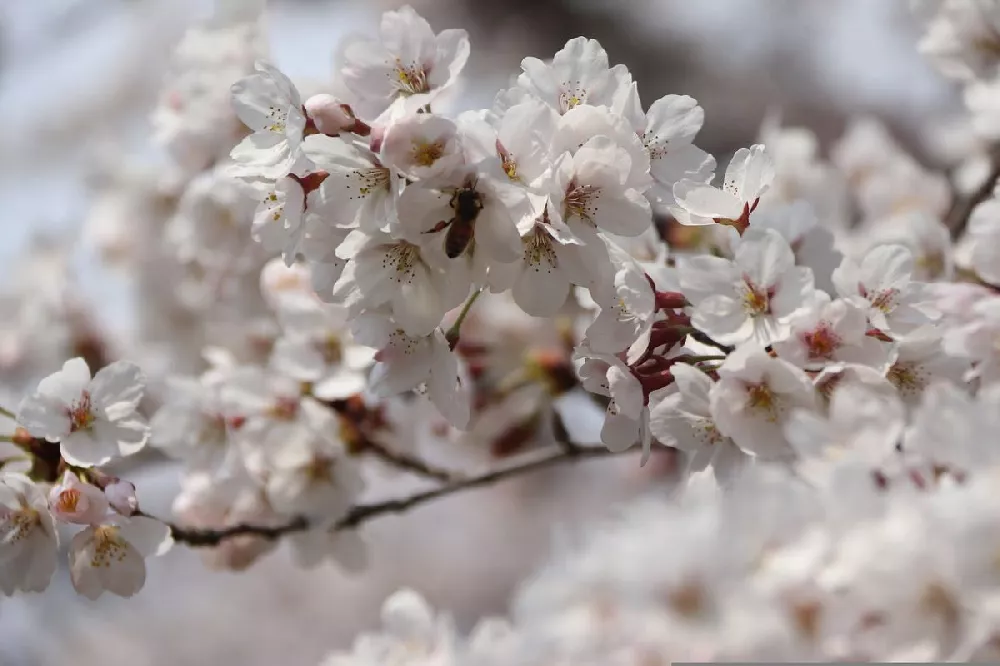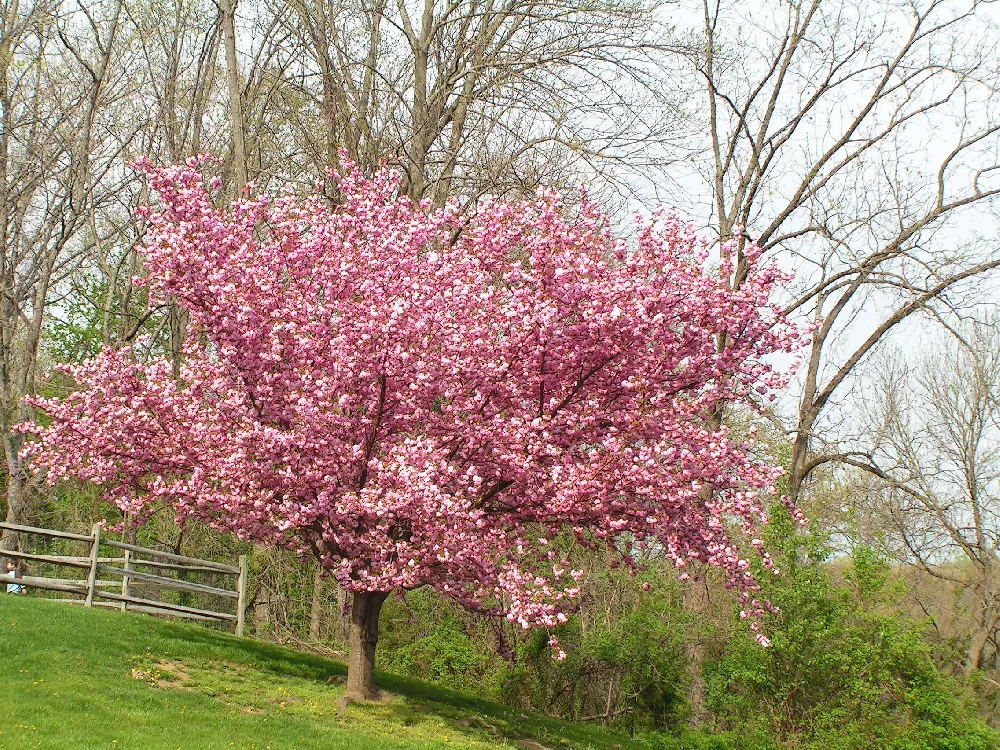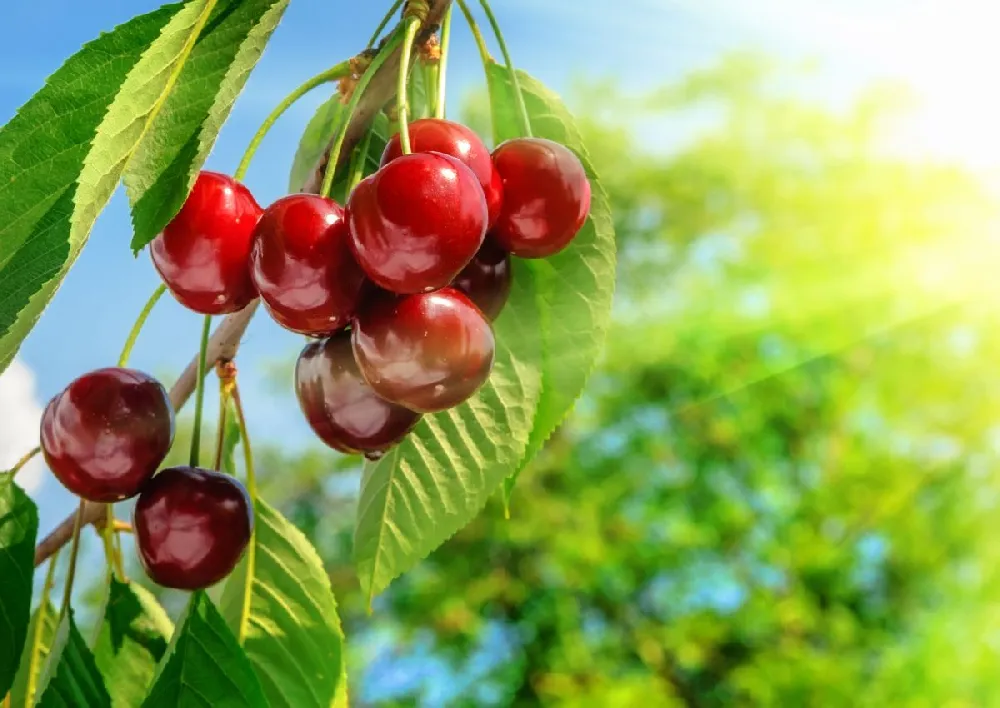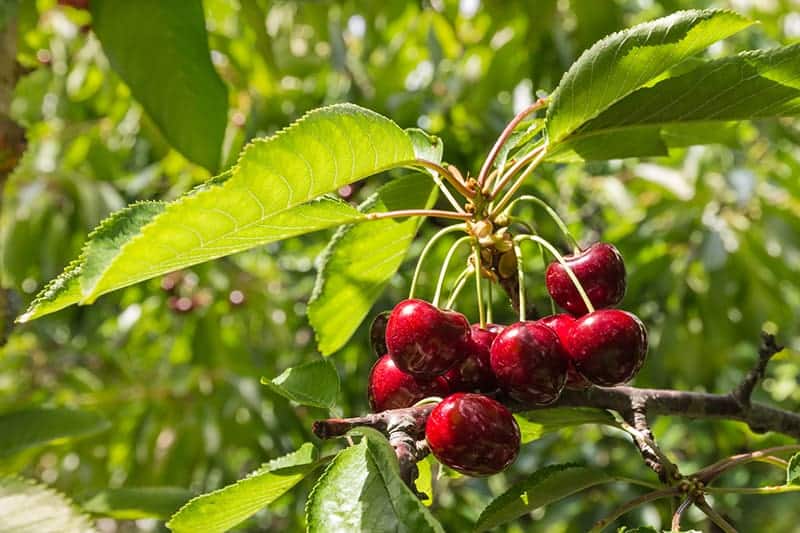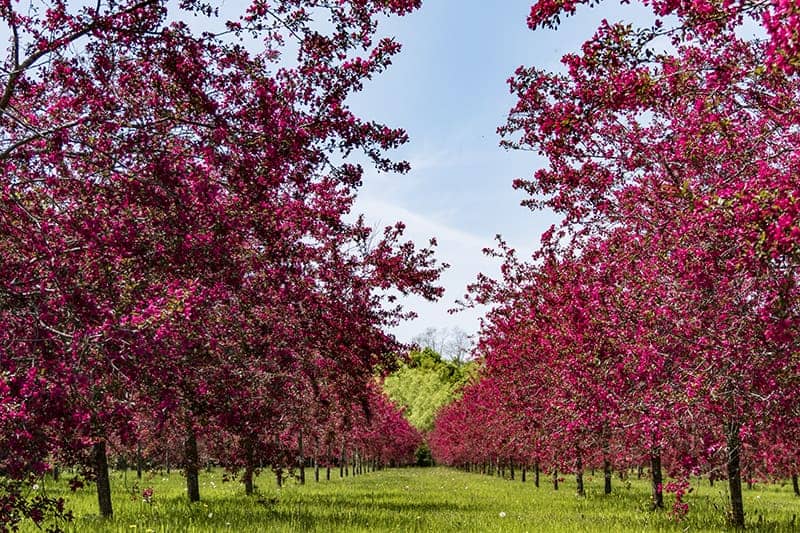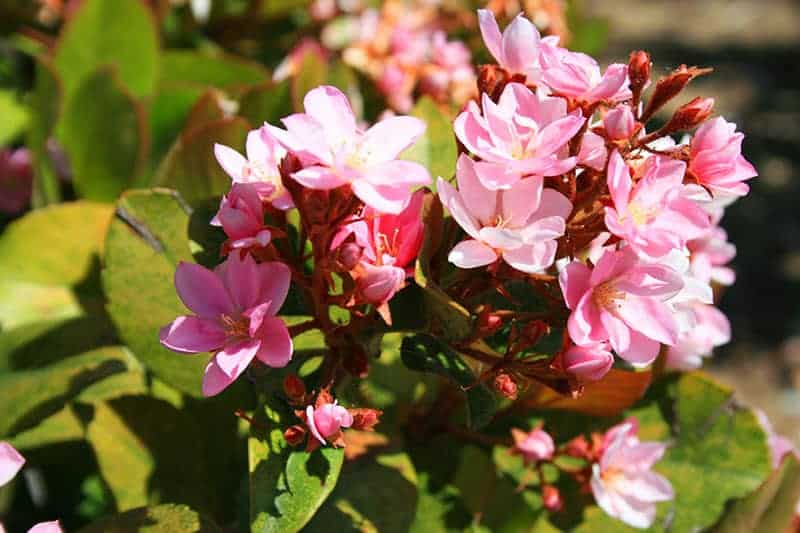- Home >
- Cherry Blossom Trees
Cherry Blossom Trees for Sale
Filters
Price Range
Growing Zones
Plant Type
Flower Color
Sunlight
Mature Height
Plant Characteristics
3 Results
Cherry Blossom Trees – Buying & Growing Guide
Cherry blossom trees, also called ornamental cherries or flowering cherry trees, come in a number of different varieties. All need significant light: either full or partial sun (at least four hours a day), and a location that drains well and isn’t open to hard winds. Keep reading to learn more about how you can grow a beautiful cherry tree that blossoms again year after year.
How to Grow Cherry Blossom Trees
How to plant cherry blossom trees
Plant your cherry blossom tree in rich, fertile soil that is acidic rather than alkaline. Space your trees 10-20 feet away from each other or other structures or plants. Dig a hole that’s roughly two feet around by one foot deep, and dig some compost in the hole before planting.
When you unwrap the root ball, ensure that there are no roots girdling the ball – trim these back so they don’t choke your plant. Fill in the hole with compost-amended soil, with the top of the root ball at grade. Stake your tree for the first year or so while it gets established, and water thoroughly.
How to achieve maximum results
Achieving maximum results with your cherry blossom trees is not difficult. Many cherry varieties are native to the U.S., and they do well in conditions that are common in all but the most humid regions of the deep south.
The key to success with your ornamental cherry is regular watering, consistent sun, and occasional fertilizing with a slow-release fertilizer intended for ornamental fruit trees. Once the trees are established, in a year or so after planting, they become much less demanding and require minimal regular care.
How to Care for Cherry Blossom Trees
Watering and nutrients
Like most newly-planted trees, young cherry blossoms need consistent, deep watering every week for at least the first year after they are planted. Once the tree is established, it can manage with regular rainfall of roughly an inch a week, or the same amount via watering or drip irrigation.
Fertilize the trees in early spring, before they begin growing for the season. There are a number of different types of fertilizer; we recommend that you choose one formulated for ornamental trees, and preferably organic. Fertlizer spikes are an easy way to ensure your tree gets nutrition. These spikes can be placed in the ground at intervals around the tree, where they release nutrients at a slow and steady rate.
Pollination
If you are growing cherry trees for their blossoms, you won’t need to worry about pollination as you are not looking forward to a fruit harvest. Cherries are generally pollinated by bees, but some of them self-pollinate while others need another variety nearby to achieve pollination. Note that cherry blossom trees will usually not pollinate an edible cherry tree.
Pruning
Prune cherry blossom trees after they have flowered. While the trees are young, prune them to the shape you’d like the tree to have when it matures. Cut out broken branches as well as any that cross or rub against each other. Cut suckers from the base of the tree, and any branches that are low on the trunk.
Stand back and assess your tree frequently when pruning. Prune selectively to open up the center of the tree and improve air circulation. Try to work with the shape the tree is taking, rather than against it, allowing the natural beauty of the tree to shine forth.
Pests, diseases, and animals
Ornamental cherries are susceptible to a number of diseases. These include black knot, which appears as a dark swelling on branches, and must be pruned out; and brown rot, which causes leaves to turn brown and die. This, too, should be pruned out of the tree.
Pests that frequent cherry trees include aphids, which can be controlled with horticultural or dormant oils, and cherry fruit fly, which can be controlled with an insecticide intended for fruit trees. Insecticides can also be used on Japanese beetles.
Animals usually leave cherry trees alone, although you’ll want to keep debris and fallen leaves away from the trunk to avoid mouse or mole nests, as they can damage the bark.
Soil
Cherry blossom trees grow well in a wide range of soil types, including loamy, clay, or sandy soils. This ability to thrive in varying soil types makes them suitable for growing in almost any garden, as they will be able to adapt to different soil types. They can also grow well in acidic, alkaline, or neutral soils. Their one requirement is that the soil must be well-draining because they will struggle to thrive in excessively wet soil that becomes boggy or waterlogged.
Light
Ornamental cherry trees perform best in full sunlight, though they can also tolerate partial shade. They require between four and six hours each day of unfiltered, direct light to thrive, though more sunlight will result in a greater abundance of flowers, so for the most spectacular floral display, you should ensure the tree is grown in a position of full sun. These trees are not tolerant of high levels of heat, so if you are growing the tree in a climate towards the higher end of their hardiness zones, then allowing the tree some shade in the afternoon will help it to keep cool. Otherwise, full sun exposure should be your aim for this tree.
Temperature and humidity
Cherry blossom trees are hardy throughout USDA hardiness zones 5 to 9. They cannot survive in extreme temperatures, whether that be very hot or very cold. Once established, they are better able to withstand temperature fluctuations, but on the whole, prefer to remain somewhere in the middle of the temperature range. They can tolerate humidity but do not need it to thrive and grow well in dry air.
Common problems
Unfortunately, cherry blossom trees are prone to suffering from pests and diseases, and due to this, they do not have very long life expectancies. They are considered to be short-lived trees and do not typically live longer than 15 to 20 years. The best advice to ensure your ornamental cherry tree has a long and healthy life is to ensure it has plenty of water and fertilizer. This will ensure vigorous growth, which will help to keep the tree strong and hopefully better able to resist attack. However, problems should still be expected.
Common pests that affect these trees are caterpillars, aphids, spider mites, and scale insects. Caterpillars will munch voraciously through the leaves and deprive the tree of vital nutrients. You should remove caterpillar nests as soon as you spot them and check the tree over regularly in order to prevent too much damage from being done. Regularly blasting the foliage of the tree is a good defense against aphids, spider mites, and scale, as this will physically wash them away. This is a good way to prevent serious infestations, but if you notice a severe problem with pests, then you’ll need to take further measures, such as a pesticide. You may wish to treat your tree with a neem oil spray as a preventative measure against pests. This is an organic pest control that will discourage pests from setting up a home on your cherry blossom tree, and it is completely safe for your plants, pets, and the environment.
Blossom wilt, bacterial canker, silver leaf, and other fungal infections can also commonly affect ornamental cherry trees. The best way to encourage good health and protect against these problems is to ensure the tree has good air circulation. You can do this by thinning out any dense branches and ensuring other trees or shrubs are not growing too close by. If a problem does take hold, you can treat it with a fungicide or antibacterial spray, but if the issue persists, you should dispose of the tree to prevent the disease from spreading through the rest of your garden.
Cherry Blossom Tree Varieties
Prunus serrulata’ Amanogawa’
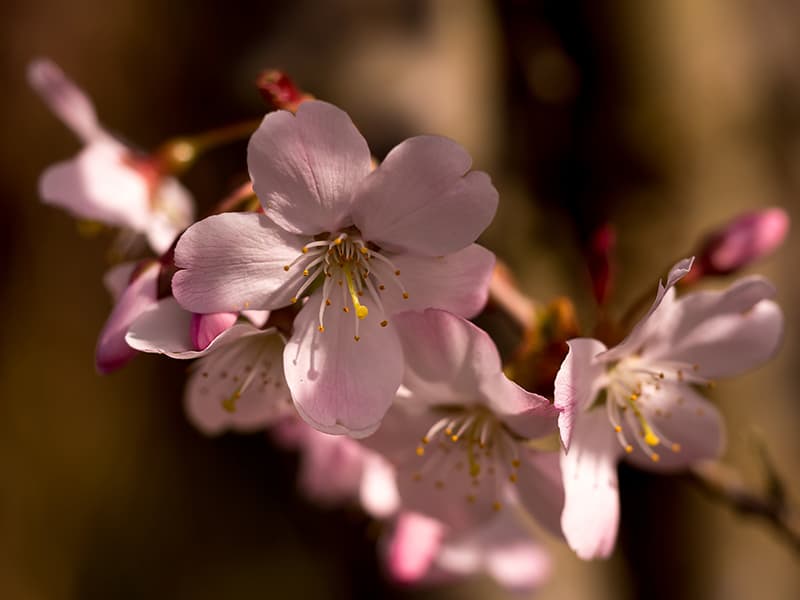
Prunus serrulata ‘Asano’
This is a very graceful tree that blooms in abundance with flowers that look like pom poms. Each blossom has around 100 petals and resembles chrysanthemum flowers. They arrive in tightly packed clusters between mid and late spring.
Prunus serrulata ‘Kanzan’
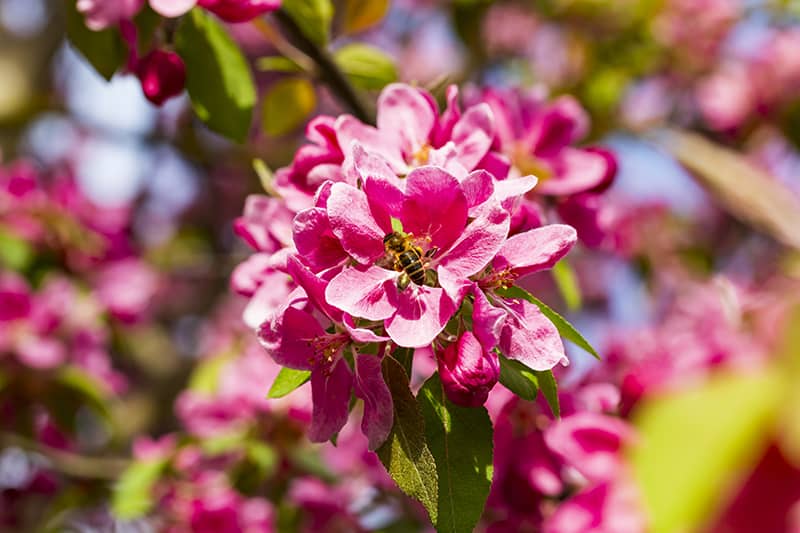
Prunus serrulata ‘Shirofugen’
This tree produces clusters of drooping flowers that emerge as pink buds but are white in full flower. It flowers in late spring, with blooms all along the elegant branches. It has a very vigorous growth habit and is one of the more popular Sakura cultivars.
Prunus serrulata’ Shogetsu’
The flowers of this tree are pure white, with frilly petals that give the blooms the look of dancing ballerinas tutus. This tree blooms in late spring through early summer with large clusters of flowers that can measure up to six inches.
Prunus serrulata’ Shirotae’
This is an award-winning variety of cherry blossom that produces pure white flowers. Each flower has between 5 and 11 petals, which fan out as cup-shaped semi-double flowers. The blooms have an alluring fragrance that is reminiscent of almonds, and they are some of the largest blossoms of any ornamental cherry tree.
